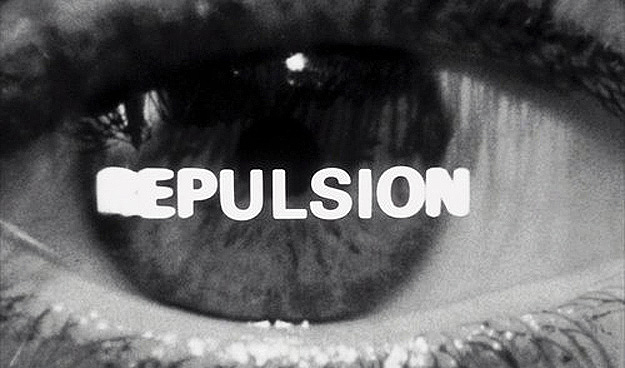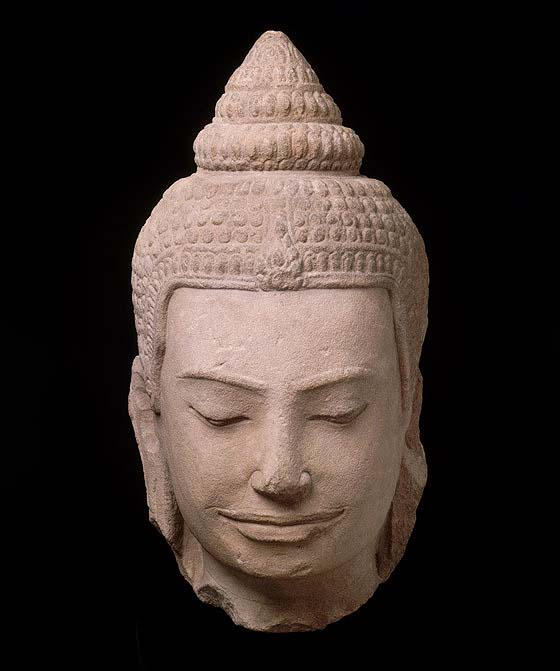The art of detachment
It has always been advocated that the doctor, the psychotherapist or the counsellor should interact with their patients and clients with a certain amount of detachment. Besides, if a therapist can also induce an air of detachment in his client, it carries a great therapeutic value.
A therapist can understand the importance of detachment by observing Dr. Patel, a physician of 20 years standing. In a typical working day, he attends to his old client Ahmed, a senior executive, who has successfully abstained from alcohol for the last two years. Ahmed never misses his follow-up clinics. Dr. Patel feels very confident to extend his experience with Ahmed to other alcoholics and drug-dependents, until he is confronted with his heroin dependent client Vimal, a third-year engineering student, who has relapsed many times and continues to be a hard-core addict. Dr. Patel feels very angry and let down by Vimal. Should he send him for a second opinion to his professional rival, Dr. Roy? After all, treating such an urchin would tarnish his fame – so why not let his rival take part of the blame! In the meanwhile, Lopamudra, a pretty young lady comes and breaks down sobbing. She is facing a great emotional upheaval due to an imminent divorce from her husband. Dr. Patel feels a lot of sympathy for Lopamudra, identifies with her problems and wishes he could teach her husband a lesson. To add insult to injury, Lopamudra’s husband is a close friend of Dr. Patel’s son-in-law. Dr. Patel feels very sorry that he can do very little except prescribing an anxiolytic. He gets annoyed when his next client Nilesh enters because the latter will again make his old complaint of chronic constipation. Dr. Patel himself is habitually constipated and is fed up with laxatives. What new can he offer to Nilesh? Dr. Patel is however very glad to have his next client, Madho, a self-claimed intellectual. Madho has come for a trivial problem but Dr. Patel gives him more time and discusses the current state of national politics with him after he has prescribed medicines. He later makes up for the lost time by hurriedly examining Ramu, the washer-man’s son with a serious physical problem that actually deserves more attention.
Dr. Patel derives a lot of ego-satisfaction from his eulogised role of a physician. But a study of his relationships with patients shows that there is a bias in his professional dealings. This bias has its roots in Dr. Patel’s inability to detach himself from the psychological movements generated by the doctor-patient relationship. On one hand, he was deeply involved in his treatment of Ahmed, the success boosting his ego. On the other hand, his ego could not tolerate Vimal’s obstinacy. Dr. Patel was emotionally moved by Lopamudra’s plight and intellectually stimulated by Madho at Ramu’s cost.
These problems are not unique to him – they are faced by every practicing physician. It may of course be argued that, after all, we are human beings and thus naturally subject to mental preferences, emotional swings, mechanical habits and subconscious upsurges. Why should we control these ‘natural’ impulses to be a therapist? Does the practice of detachment make one a better therapist?
One can perform a small experiment on oneself to understand this. All of us play different roles in our lives. Thus, simultaneously a person can be playing the roles of a husband, father, son, uncle, brother, employer, etc. If we observe ourselves very carefully, we will discover that we are deeply attached to some roles while we are somewhat dis-identified from others. A further introspection will reveal that the roles from which we are dis-identified are exactly the roles we are most successful in acting out. On the basis of this introspective insight, Roberto Assagioli, the pioneer of Psychosynthesis, formulated the principle:
“We are dominated by everything with which our self becomes identified. We can dominate and control everything from which we dis-identify ourselves(1).”
Undoubtedly, one’s role as a therapist can be greatly improved if one learns to detach and dis-identify oneself from the problems of one’s clients. It is a well-known fact that mental health professionals are at great risk of developing psychiatric problems, cardiologists are predisposed to heart attacks, surgeons are prone to stress-related disorders and radiologists often have a short lifespan. One of the important reasons might be their inability to de-link themselves from the patients they have to work with. The practice of detachment can help the physician not to be unduly involved with his patients. It aids him in exercising his intuition for diagnosis and treatment. By ignoring a patient’s over-dependence on him, the physician actually helps him to develop willpower that motivates the patient to get well. By acting in a non-judgmental way, the physician can also handle the problems of his patients with equipoise.
A word of caution is important. Detachment does not mean that the physician should be indifferent to his patients and feel no goodwill towards them. On the contrary, a true detachment enables one to be compassionate even under unfavourable circumstances.
Why is it so difficult to practise detachment? This is because the physical, vital and mental planes of our personality are intermingled and shot through and through with the ego. Evidently, detaching one’s inner self from this outer conglomeration of thoughts, emotions and habits is an arduous labour. It is only when one has practised this dis-identification from one’s own movements, that one can detach oneself from others.
To master this technique of dis-identification, one has first to consider psychological movements as not originating in oneself but as universal forces. Thus, it is not that we become ‘angry’ but that ‘a wave of anger overpowers us.’ It is not that we become depressed but we succumb to a wave of depression. Such a perspective admits two forces: on one side, the ‘vigilant self’ and on the other side the ‘negative force’. The vigilant self can act as a ‘witness’, de-link itself from the negative force and re-connect with the higher and positive forces of faith, confidence, trust, love, power and wisdom.
“Seekers are always told, ‘If you want to get rid of something, say that it is outside.’ This is only an impression, but it is easier to get rid of a difficulty if you have the impression that it is outside you.... The secret lies in knowing how to place it just where it is most convenient for the immediate action.
“If you have a serious difficulty in your character, for example, the habit of losing your temper, and you decide: ‘I must not get angry again’, it is very difficult, but if on the other hand, you tell yourself: ‘Anger is something which circulates through the whole world, it is not in me, it belongs to everybody; it wanders about here and there and if I close my door, it will not enter’ , it is much more easy. If you think: ‘It is my character, I am born like that’ , it becomes almost impossible. It is true there is something in your character which answers to this force of anger. All movements, all vibrations are general – they enter, they go out, they move about – but they rush upon you and enter into you only to the extent you leave the door in you open. And if you have, besides, some affinity with these forces, you may get angry without even knowing why. Everything is everywhere and it is arbitrary to draw limits(2).”
Assagioli describes a model exercise that can be practised for learning the art of dis-identification.
“The exercise can be done as follows (when it is performed by a group, the one who directs the exercise naturally speaks in the first person, but each one can apply to himself what is said):
“I put my body into a comfortable and relaxed position with closed eyes. This done, I affirm: I have a body but I am not my body. My body may find itself in different conditions of health or sickness; it may be rested or tired, but that has nothing to do with my self, my real ‘I’. My body is my precious instrument of experience and of action in the outer world, but it is only an instrument. I treat it well; I seek to keep it in good health, but it is not myself. I have a body, but I am not my body.
“I have emotions, but I am not my emotions. These emotions are countless, contradictory, changing, and yet I know that I always remain I, my-self, in times of hope or of despair, in joy or in pain, in a state of irritation or of calm. Since I can observe, understand and judge my emotions, and then increasingly dominate, direct and utilize them, it is evident that they are not myself. I have emotions, but I am not my emotions.
“I have desires, but I am not my desires, aroused by drives, physical and emotional, and by outer influences. Desires too are changeable and contradictory, with alternations of attraction and repulsion. I have desires but they are not myself.
“I have an intellect, but I am not my intellect. It is more or less developed and active; it is undisciplined but teachable; it is an organ of knowledge in regard to the outer world as well as the inner; but it is not myself. I have an intellect, but I am not my intellect.
“After this dis-identification of the `I’ from its contents of consciousness (sensations, emotions, desires and thoughts) I recognise and affirm that I am a Centre of pure self-consciousness. I am a Centre of Will, capable of mastering, directing and using all my psychological processes and my physical body.”
This is just an illustration of how one can practise the art of detachment. There are other techniques and one can also innovate similar techniques that suit oneself. We have always been told that we should learn the art of detachment but seldom are we shown how to practise it. The full value of detachment can be experienced when we not merely consider it as a ‘technique’but incorporate it as a part of life.
References
1. Assagioli Roberto. Psychosynthesis A Collection of Basic Writings. USA; Penguin Books, 1982, p. 22.
2. The Mother. Collected Works of the Mother, Vol.4. Pondicherry; Sri Aurobindo Ashram, 1972, pp. 169-170.
3. Op.Cit. Psychosynthesis A Collection of Basic Writings. pp. 118-119.
— Dr. Soumitra Basu
Share with us (Comments, contributions, opinions)
When reproducing this feature, please credit NAMAH, and give the byline. Please send us cuttings.






